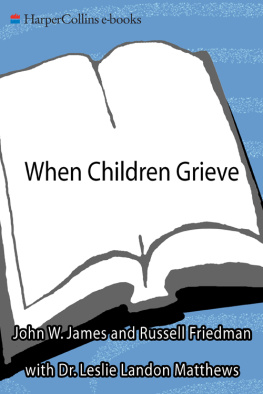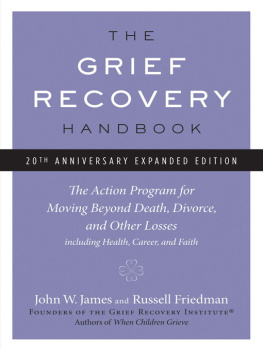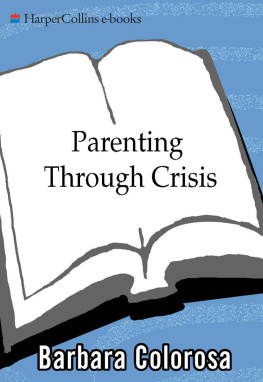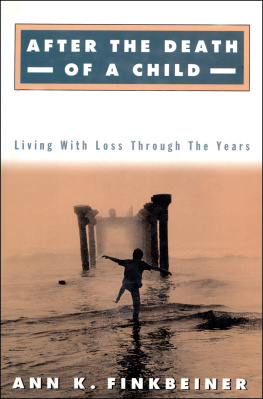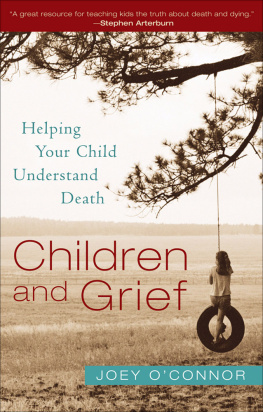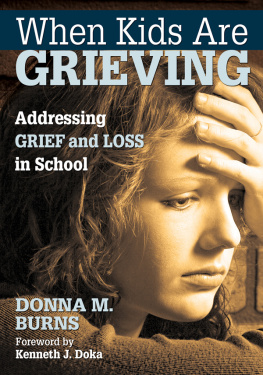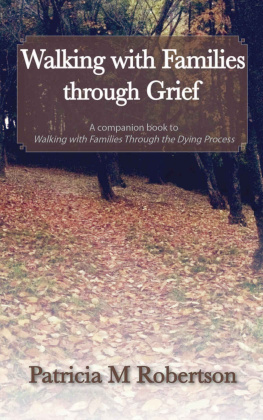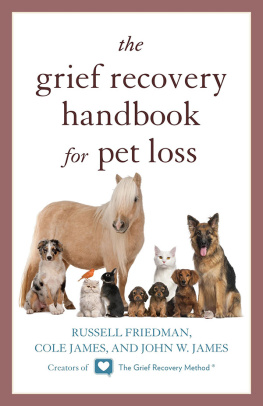At The Grief Recovery Institute our daily corporate pledge is to never grow up.
So far, we think were doing a pretty good job.
We dedicate this book to the child inside us all, big and small.
From John In memory of Coach Paul Shebby, who taught me self-discipline Thanks, Coach
From Russell This ones for you, Dad And for my daughter, Kelly with all my love
From Leslie For my husband, Brian, and my dad, Michael The men whom I will love forever
In each of our lifetimes, there will be events that fall well outside the range of normal, and for which we have little or no preparation or experience.
The events of September 11, 2001, are clearly so abnormal that most of us, adult or child, do not have a reference point to guide us in the emotional responses to and the aftermath of such an experience.
This book was written long before the tragic events of September 11 and makes no direct reference to it or any other such national or global occurrence.
Yet, what this book teaches about childrens reactions to all loss events, and what it demonstrates to assist parents in guiding children, is practical and functional when applied to the kinds of feelings and fears caused by the abnormal incidents that generate an overwhelming amount of emotional energy in children.
Introduction
PUT YOUR OXYGEN MASK ON FIRST
At the beginning of every commercial airline flight, the cabin staff make a series of announcements about the safety procedures to follow in the unlikely event that an emergency should occur. Anyone who has flown will recall hearing what to do if the oxygen masks drop from the overhead compartment. The announcement sounds something like this: If you are traveling with young children, fix the oxygen mask securely over your mouth and nose, before attempting to help your children. Each time you hear that, you automatically understand that if you cant breathe, you wont be able to help your children.
Since we are the safety attendants for this book, we are going to make the following announcement before this book taxies down the runway: If you are traveling with children of any age, please affix the ideas in this book firmly over your head and your heart, before attempting to help your children.
Although we will not be passing through the cabin with refreshments, we will be giving you some incredibly valuable safety tips that can have a lifelong positive impact on your childs emotional well-being. Some of the ideas in this book will be new to you, and some will represent things you have known for a long time. The new ones may catch you off guard, and you may find yourself at odds with them at first, so with one last flight analogy, we alert you to: Fasten your seat belts.
First, we are John W. James, who began helping grieving people twenty-three years ago, but not as a career choice. Like many people, John was drawn to this arena by an event so overwhelming that he did not know how to deal with it. That event was the death of his three-day-old son. John was so affected and limited by that loss, he realized that if he did not find a way to feel different or better, he did not think he could go on living in such pain for another forty or fifty years. John discovered a series of actions that helped him complete the pain in his heart, and allowed him to begin participating fully in life again. As Johns friends noticed the changes in his outlook and attitudes, they began bringing others who were also struggling, just as he had been, to find a way to break the bondage of pain that seemed to rule their lives. Soon, John was spending all of his time helping grieving people, and his construction business fell by the wayside.
As John began to devote all of his waking hours to helping people deal with death, divorce, and other losses, he realized that he would never have enough time personally to help even a tiny fraction of the people whose lives had been devastated by tragic events. Inside this book is the detailed story that led to John writing the very first version of The Grief Recovery Handbook, which he self-published. One of the major reasons that John wrote that book was his realization that there were so many millions of grieving people and so little time to help them all. The book allowed people to learn about the actions they could use to help themselves, even though they did not have direct contact with John. Very soon after that self-published edition became available, HarperCollins (then called Harper & Row) published a new version of The Grief Recovery Handbook, with the subtitle A Step-by-Step Program for Moving Beyond Loss, which allowed John to upgrade and improve the ideas that he had been refining by working with grieving people.
Which brings us to coauthor Russell P. Friedman, who came to work with John in 1987. While Russells life story is very different from Johns, he also did not choose to be in this field. Russell arrived at The Grief Recovery Institute on the heels of a second divorce and a financial meltdown, both of which left him feeling emotionally crippled. He arrived at the institute not to help others, but to get help for himself.
In fact, Russells first awareness of grief recovery came quite accidentally, when he was dragged by a friend to see John, who was presenting a short introductory lecture. Up until that day, Russell would not have known to use the word grief to explain the way he felt about his divorce or his financial dilemma. Like most people, Russell presumed that grief related only to death. And at that time, no one around Russells life had died, so he didnt even understand why his friend had made him tag along to listen to John.
It was at that lecture that Russell heard some ideas that made him recognize that he indeed was a griever, and that the end of his marriage had meant the death of all the hopes, dreams, and expectations of going off into the sunset with that special someone. Russell contacted John the day after that lecture and volunteered to work at the institute. When John tells this story, he says, Russell showed up one day thirteen years ago, and I havent been able to get rid of him, so he is now my business partner, my coauthor, and my friend.
In 1998, HarperCollins published a revised edition of The Grief Recovery Handbook The Action Program for Moving Beyond Death, Divorce, and Other Losses. Once more, John, this time with Russells help, had the opportunity to refine and upgrade the actions that help people resume a productive place in the mainstream of their lives, even though they have experienced devastating losses.
And finally, we are Leslie Landon Matthews, Ph.D., who is affectionately known around here as Fhud, which is how we pronounce Ph.D. She is also known as Dr. Mom, a fitting title to go along with the recent birth of her third child. Leslie arrived at the institute in an entirely unique manner, quite different from John and Russell.
Leslies dad was Michael Landon, the actor known to nearly all from Bonanza, Little House on the Prairie, and Highway to Heaven. Michael Landon died in 1991 at the age of fifty-four. Any of us is likely to be devastated when a parent dies, but often the pain is made more intense when the parent is young and is robbed of what would be considered a normal life span. Children are left with unrealized expectations of what the future with their parents might have held. But a third dimension was added to Leslies grief. Her dads fame made it nearly impossible for Leslie and her family to deal privately with their emotions about his death. The onslaught of media attention spilled over even to the cemetery, making it impossible to find any solitude or comfort at her dads grave.

